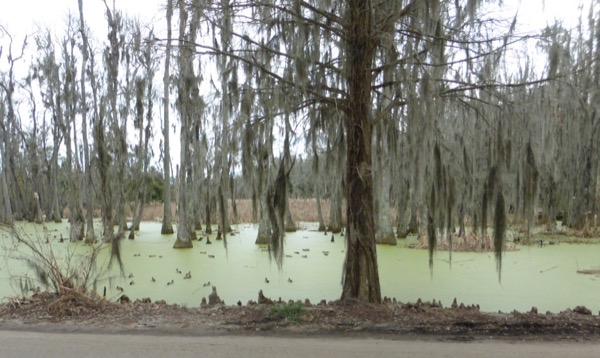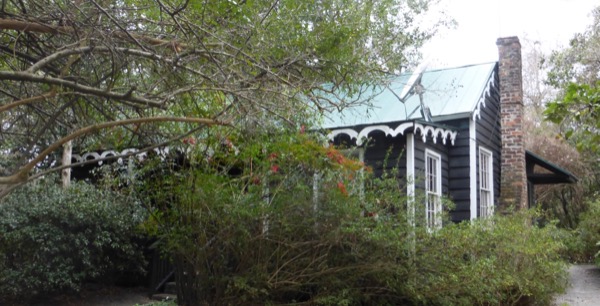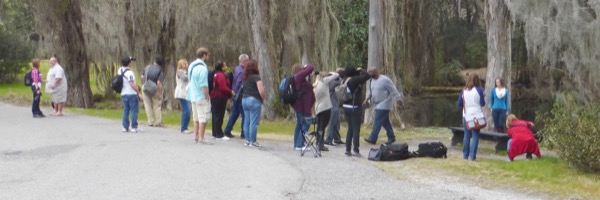The Magnoiia Plantation lies along the Ashley River, a few miles inland from the sea. It is known not just for its plantation house, but for the gardens and wildlife it includes.
Turning in off the main road, there’s no mistaking you’re in the deep South:
Soon, though, you come to the plantation house with beatifully manicured gardens and lawns:
A nearby sign gives some history:
It’s disturbing to think of a pastor as the owner of slaves, but I’m sure it wasn’t uncommon. Across from the house is a fenced pasture that held a donkey and some miniature horses:
Before touring the house, our guide led us around the gardens for which Magnolia Plantation is reknown. It was too early in the season for more than just a taste of the color to come:
The wooden nubs below are called cypress knees, part of the living tree, but their purpose is uncertain:
We came to the family crypt:
Nearby is the grave of a family friend:
That’s the tour guide, not only for today, but for my city tour the previous day as well. I believe he is the best and most knowledgeable guide I’ve had on my travels. We were now close to the back lawn of the plantation house:
and a sign, front and back, explaining the role of the plantation in the Revolutionary War:
A bit further along was a flat bottomed boat that had been used to haul the plantation’s cotton down the river to Charleston:
The river is tidal, so part of the day it would flow toward Charleston, and the other part it would flow back toward the plantation. Circling around close to the plantation house, we passed by the schoolhouse:
The tour also included a tram ride around the more remote parts of the plantation. We passed some slave quarters:
Then more swamp, this one with red algae:
These ramps are built in the lakes to give the alligators places to sun:
The turtles don’t mind using them, too:
Sometimes, the turtles and alligators share:
The tram driver said that when the alligator gets hungry, he swings around, crushes a turtle in his jaws, and has a nice snack. The turtles aren’t too smart; the ones lower on the ramp crawl up to take the place of the one removed. Not all alligators use the ramps; some like to sun by the side of the road:
I’m leaving the shoulder in the lower left corner to give you a sense of how close we were - and let me remind you, this was an open-sided tram!
The tram driver would pull forward, then stop, pull forward, then stop, so each of us got a turn right next to the gator. Here’s mine, there is no zoom on this shot:
Just down the road was another one, but at least this one was pointed away from us:
Miraculously, we made it back to the plantation house with the same number on the tram as what boarded:
We had to wait a while for the house tour to begin, so I got some shots of the gardens in front of the house:
I noticed this crowd of people photographing something, and for a moment I thought maybe a gator had bagged someone:
But no, it was a photography class, and they were photographing a hired model, in blue, against the tree:
Our tour started, but regrettably, this was yet another occasion when interior photography of the house was not permitted. The interior was interesting, but not spectacular in any way. It was intriguing that John James Audubon was a friend of the family and stayed with them in the house several times. I did get a couple shots of the back porch:
and a couple more of the house before leaving:
Next on my agenda was to visit some friends in Atlanta, which turned into an extended intermission in my travels. That’s the subject of my next post.




























































No comments:
Post a Comment